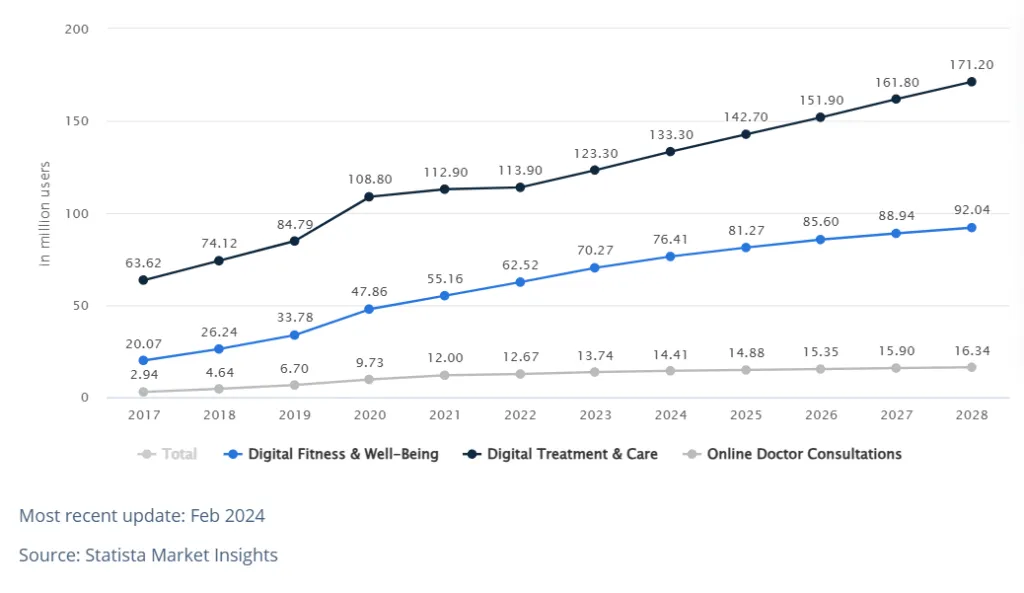The Digital Health market in Southeast Asia (SEA) is experiencing remarkable growth, driven by a multitude of factors that are transforming the healthcare sector across the region. This sector is not just growing; it is thriving, marked by rapid advancements and innovations that cater to a diverse demographic. The following analysis offers stakeholders and investors involved in SEA healthcare consulting a comprehensive understanding of market dynamics and investment opportunities that are emerging within this vibrant landscape.
Driving Revenue in SEA’s Digital Health Market
Projected to reach a significant revenue of US$6.07 billion by 2024, the SEA digital health market demonstrates robust growth potential with an expected steady growth rate of 8.59% from 2024 to 2028, culminating in a market volume of US$8.44 billion by 2028. This growth trajectory is a testament to the dynamic evolution of the digital health sector in the region, driven by increasing acceptance and integration of digital solutions in healthcare practices.

The popularity of digital health solutions in Southeast Asia is climbing, particularly due to their convenience and accessibility, which cater well to the urban lifestyles in countries like Singapore and Malaysia. These nations are seeing a spike in demand for services like online doctor consultations and digital fitness platforms. Furthermore, the younger, more tech-savvy generations in Indonesia and the Philippines are increasingly inclined towards digital options for managing their healthcare, embracing technology as a core component of their treatment and wellness strategies.
Market Trends in SEA Digital Healthcare
Singapore, a leader in digital health innovation, is experiencing a significant increase in the usage of online doctor consultation platforms. These services are becoming increasingly popular among working professionals who appreciate the flexibility and time-saving aspects of remote healthcare access. Moreover, the Digital Fitness & Well-Being segment is gaining momentum across the region, projected to generate revenue of US$2.76 billion by 2024, highlighting its significant role in the overall market growth. This trend is supported by a growing number of health-conscious individuals who use digital apps to track fitness goals and maintain a healthy lifestyle.

Challenges and Solutions in SEA Healthcare Access
Indonesia’s unique geographic challenges, with its sprawling archipelago, make digital health solutions particularly vital. Online platforms are crucial in connecting patients with healthcare providers, especially in remote areas where medical facilities are sparse. Digital health technologies are increasingly employed to offer remote monitoring and care management for chronic conditions, ensuring that even the most isolated populations can access quality healthcare.
Economic Drivers of SEA’s Digital Health Market
The burgeoning middle class across Southeast Asia is a primary force driving the demand for sophisticated healthcare services, including digital health solutions. In countries like Thailand and Vietnam, increasing disposable incomes are allowing a greater number of people to access services such as digital fitness subscriptions and online medical consultations. Furthermore, government efforts to promote digital healthcare and telemedicine are crucially supporting the market’s expansion, demonstrating a strong commitment to enhancing healthcare accessibility and efficiency across the region.
As Southeast Asia continues to navigate these transformative times, the digital health market stands out as a beacon of innovation and opportunity. For stakeholders and investors, particularly in SEA healthcare consulting, these trends not only highlight the vibrant potential of the healthcare sector but also underscore the strategic investments that can foster sustainable growth and improve healthcare outcomes across the region.







